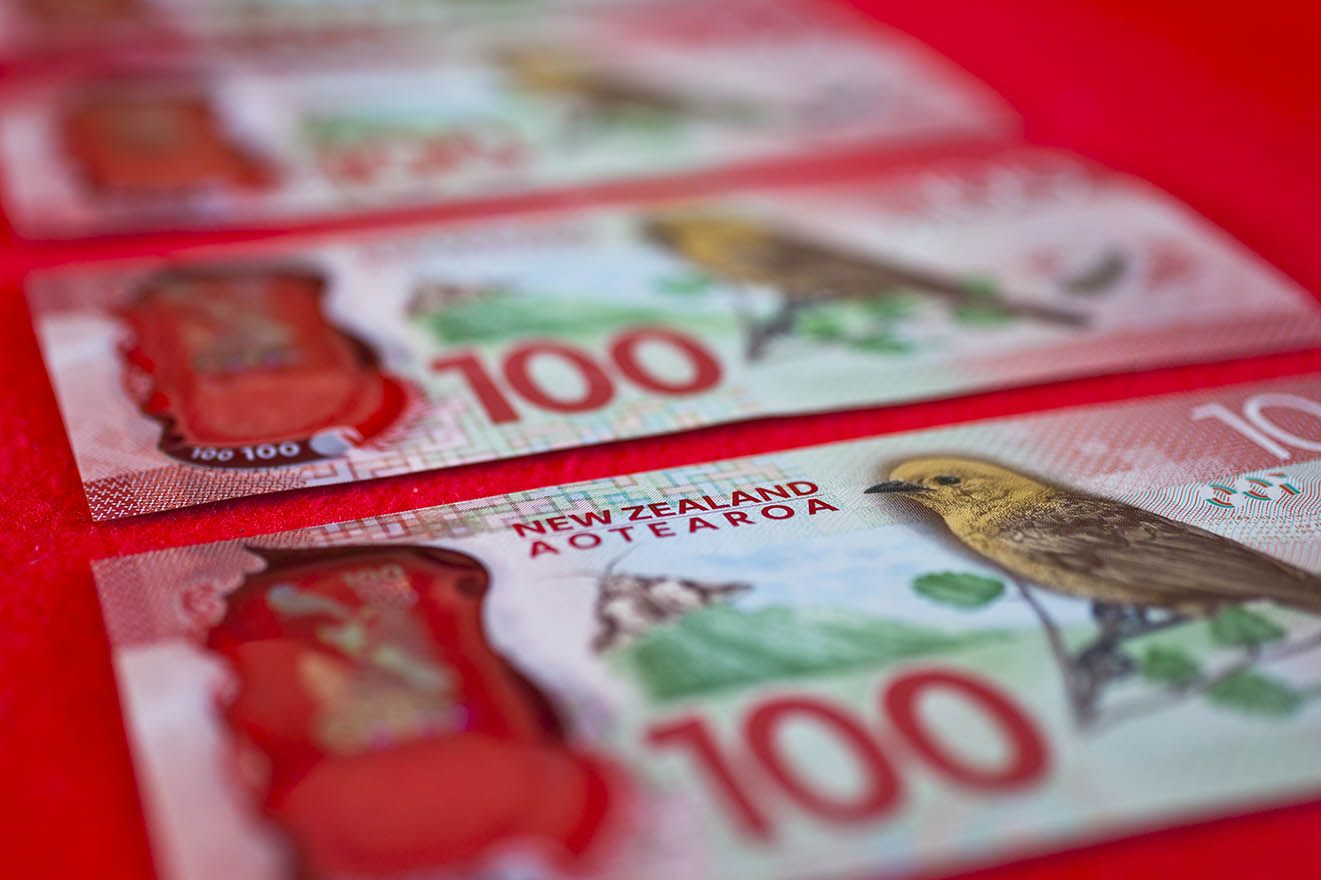New Zealand Dollar to be Saddled by Series of Interest Rate Cuts at the RBNZ
- ANZ see two successive RBNZ rate cuts ahead
- Could add to NZD downside
- Weaker NZD can help aid the economy

Image © Adobe Stock
- GBP/NZD at time of writing: 2.0403, -0.75%
- Bank transfer rates (indicative): 1.9689-1.9832
- FX specialist transfer rates (indicative): 2.0100-2.0219 >> More information
Increasing expectations for interest rate cuts at the Reserve Bank of New Zealand could prove to be a source of downside pressure on the New Zealand Dollar, which is already the worst performing major currency of 2020.
Rising fears that China's coronavirus outbreak will push the global economy into a recession are particularly pertinent for the New Zealand economy, which is relatively small, open and highly dependent on the Chinese economy for trade.
The RBNZ can however soften the blow of any downturn by cutting interest rates in the hope that it stimulates domestic economic activity. However, the rule-of-thumb in the world of foreign exchange is that when a central bank cuts interest rates, the currency it issues falls in value.
"We now expect the RBNZ to cut the OCR 50bp in March and a further 25bp in May, taking the OCR to just 0.25%," says Sharon Zollner Chief Economist at ANZ Bank. "The COVID-19 situation is evolving very rapidly."
"A marked global slowdown is guaranteed, due to both demand and supply disruptions. Our forecasts assume New Zealand GDP stalls in the first half of the year, with a gradual recovery from there," adds Zollner.
The New Zealand Dollar has lost value against a host of major currencies in 2020 amidst the coronavirus outbreak, with losses against the Dollar standing at 7.0%, the Euro at 6.0% and 3.33% against the Pound. (However, the Pound-to-New Zealand Dollar exchange rate is falling amidst a broad-based decline in the value of Sterling, which appears to be closely linked to the recent spike in market fears relating to the coronavirus.)
ANZ say New Zealand's economy is well placed to weather this shock, they see clear risks of a larger slowdown or even recession.
"Fiscal policy will need to do the heavy lifting, but lowering the OCR will ease financial pressure, facilitate a lower NZD, aid confidence at the margin, and support the recovery," says Zollner.
The latest data on how traders in the global foreign exchange market place are positioned on various currencies meanwhile shows selling interest in the NZ Dollar has continued to rise.
"The New Zealand dollar was the biggest short in the G10 and has likely remained under heavy selling pressure in the past few days amid the risk-off environment," says Francesco Pesole, FX Strategist at ING Bank. "The current highly volatile situation tied to the Covid-19 outbreak suggests further downside risks ahead for currencies that are highly exposed to risk, such as the Australian and New Zealand Dollars."
The Australian Dollar meanwhile remains a contender with the New Zealand Dollar for 2020's worst performer, and this should not come as a surprise owing to the fact that Australia has even greater trade ties to China.
"In the near future as we see the Reserve Bank of Australia as more inclined to ease than its counterpart in New Zealand, and the Australian economy appears more exposed to a China slowdown than its neighbour," says Pesole.
ING see the potential for the New Zealand Dollar to increase in value against the Australian Dollar as a result.




